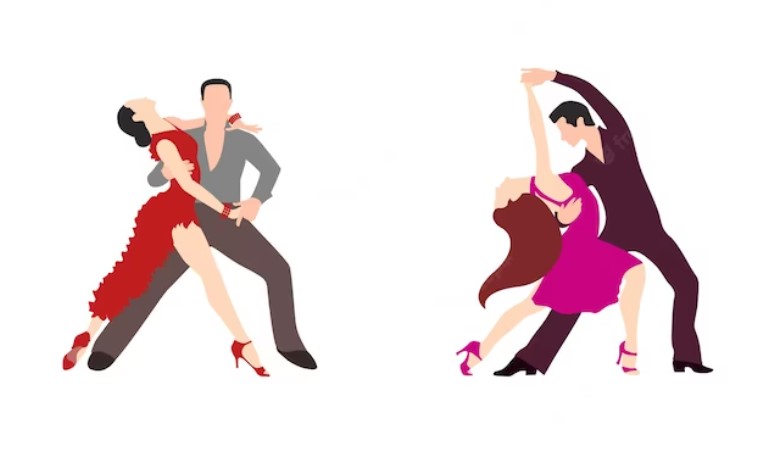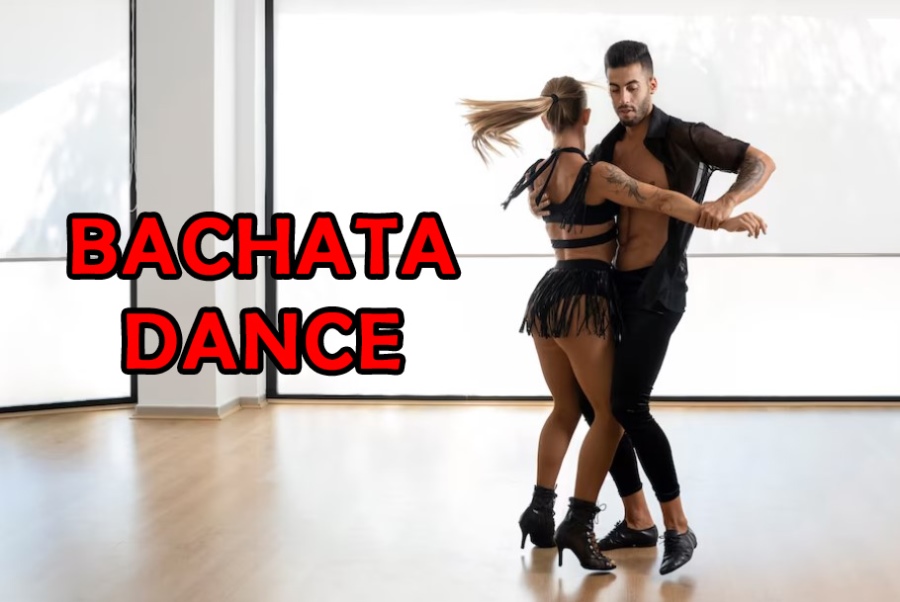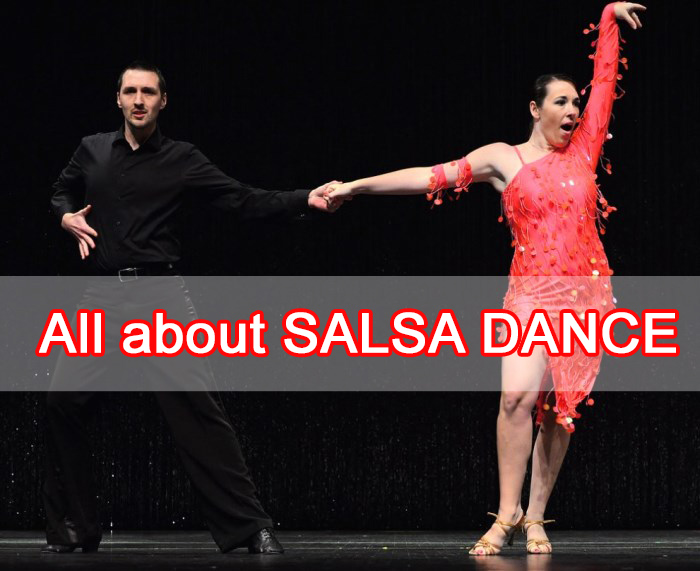Bachata vs Salsa can be a riddle for non-dancers and inexperienced dancers because they have the same Latin vibes from both movements and music.
However, with merely a few tips from us, you will be able to distinguish them at first sight and determine which style you want to learn!
Table of Contents
Bachata & Salsa Similarities
Both salsa and bachata are considered the signature styles of Latin dances. People sometimes get confused between these two dances because they look alike at first sight and also flatter the connection of the dancers.
The first thing in common is their origins. They both came from a Latin – American nation and spread their influence throughout the country before gaining approval and appreciation internationally.
The rhythm of salsa and bachata is quite similar and particular.
The dancers in both styles have a nearly identical way to use the beat, even though the steps they execute are very much different. We will discuss this difference in the next segment.
Like other Latin dances, you can enjoy a salsa or bachata dance on your own with no need for a partner. The movements won’t change much, be it a solo or a duo.
Bachata vs Salsa: Key Differences
There is one big difference between bachata and salsa that you can tell right away if you pay a little bit more attention.
Salsa movements are noticeably faster than bachata. Hence, one could say salsa is more playful, while bachata is on the romantic side.
If music is not your forte, you can observe the dancers instead.
Bachata dancers don’t have any turns and spins in their routine, though they often keep their partners at a very close distance.
In contradiction, salsa routines involve quick changes of direction. And the dancers are not necessarily intimate.
| Criteria | Bachata | Salsa |
| Pace & Mood | Slow and sensual. | Quick and energetic. |
| Beats | 160 – 220 bpm. | 108 – 152 bpm. |
| Music | Lead guitar, rhythm guitar, bass guitar, bongos, and Guira as a band. | Vocal, guitar, bongos, piano, trumpet, congas, saxophone, trombone, claves, timbales, and Guiro included. |
| Steps | 8-beat combination: 1 – 2 – 3 – tap – 1 – 2 – 3 – tap. | 8-beat combination: 1 – 2 – 3 – pause – 1 – 2 – 3 – pause. |
| Body movements | Less footwork, more upper body rolls or dips. | A lot of shoulder work as well as footwork. |
| Intimacy | Extremely intimate with no distance between the dancers. | Less intimate and more playful with more distance in between. |
| Popularity | Getting more popular recently. | Having been the most well-known among Latin styles. |
Tempo & Beats
We often talk about how speedy and energetic salsa dancing is, and the tempo is truly impressive at 160 – 220 bpm. With fast footwork and various turns, it is undoubtedly a difficult dance style to master.
Compared to salsa, bachata is visibly slower at 108 – 152 bpm. The intervals are specifically for dipping and holding, complimenting the dancers’ figures and chemistry.
Since dance is a creative art, there might be an exception now and then. Thus, we need to analyze these two dances from other aspects as well!
Music & Instruments
The traditional bachata music is 4/4 time songs played by guitar and is usually recognized by the romantic vibe and the slow tempo.
As time goes by, the melodies have gotten so much more colorful with the addition of other guitar types, guiro, and bongos. Modern bachata songs include electronic sound effects and sound more upbeat.
Salsa is also in 4/4 time with a syncopated rhythm sounding very elaborated to the ears, known as “Clave”. With time, salsa music has also evolved and further expressed the signature energy.
We can spot numerous instruments in present salsa, such as drums, saxophones, pianos, and even vocals.
Between bachata vs salsa music, bachata is more romantic and salsa is more colorful.
Bachata vs Salsa Steps
Bachata dancers basically move their hips from side to side. After three steps to one side, comes a tapping motion that you can easily notice in a live performance.
The female bachata dancer would further accentuate it with a circular motion of the hip, which plays a crucial part in the sensualness of the dance.
In salsa, the pattern is backward – forward – forward – pause. Hence, you can differentiate it from the bachata more easily if you watch a performance rather than read a description.
It’s safe to say the exciting thing about salsa is the spinning and turning movements.
Body Movements
Latin dances combine various body movements, bachata and salsa are no exception, though they are drastically different.
In bachata, the most eye-catching movement is the hips moving from side to side. There is not much leg work, but the upper body has to work a lot with rolls and dips.
The upper body doesn’t work that way in salsa.
You will have to perform smooth shoulder movements as well as excel in quick footwork. Salsa dancers today have been enriching salsa with movements from other styles of dancing.
Intimacy
The distance of the dancers matches the difference in pace.
You will always find bachata duos with little to no gap between them. They stay hip to hip during the routine and perform vigorously with their upper body. Of course, the chemistry is very important here.
Salsa dancers have more space so they can spin and turn continuously. They give off a less sensual vibe, instead, energy and playfulness are what they try to convey.
Popularity
Although they both have gained a remarkably big group of supporters, it’s undeniable that salsa has been more well-known for a long time.
You can visit various little towns and join their salsa nights, though not all of them have bachata parties.
We reckon the main reason for this difference is how you can dance to salsa and flaunt your attractiveness as a solo dancer. Meanwhile, you need to have a partner for bachata, and the dance is evidently sensual!
Bachata Dance Origin
Bachata is one of the Latin music genres appearing in the 1960s Dominican Republic. Emerging from the remnants of a conservative dictatorship, the first songs of the genre were considered taboo rather than art.
The literal meaning of “bachata” is “celebration” or “backyard party”. People lived up to the name as they danced to it in courtyards and on the streets. But it was as far as bachata went back then.
In its early days, bachata had two dancers arm-in-arm with their abdominal segments coming into contact.
Only until the 1990s did Western dancers come up with creative forms, from side-to-side movements to hip taps.
Due to many steps inspired by other styles and the freedom we have today, bachata has found more enthusiasts.
Nowadays, bachata is more well-received everywhere in the world, but exceptionally adored in the Caribbean region.
The dancers in different countries have also developed more variants of bachata.
Other Bachata Styles
We will do a quick scanning and see how much bachata dance has evolved over the past decades.
- The Original Dominican style
It’s the first bachata dance that we have ever seen. It involved mostly closed positions and not a lot of turns.
- The traditional style
Despite being labeled as “traditional”, it was created in the 1990s, as the dancers created routines for duos and emphasized hip movement.
- The modern style
It is quite young, only born in 2005 by Spanish dancers. The female dancers will show more upper body movements without forgetting about the hips.
There is also the pattern of salsa incorporated into it.
- The sensual style
The normal bachata is already sensual, yet this style is on a whole new level.
It also came from Spain. The ladies will add more body waves as well as circular movements.
- Tango style
Tango is nonpareil if you are talking about the most popular dance for a duo and the hip movement from Tango is thrown in for more sensuality.
Salsa Dance Origin
The traditional salsa has a remarkably long history compared to bachata. It originated in Cuba (South America) in the 1920s.
Nonetheless, it was not until two decades later did the Latin communities residing in New York truly breathe life into this dance.
Inspired by Afro-Cuban dance styles such as mambo and danzon, Salsa is full of energy and Caribbean vibes. It consists of two major styles.
If the dancers move around each other, it’s circular salsa. The other is linear salsa, wherein each dancer has a slot and only shuffles between two sides of it.
As salsa dancers travel and come in contact with various cultures, more styles of salsa stem from the roots. What we often see today are the derivatives of New York, Los Angeles, and Puerto Rico.
Other Salsa Styles
Salsa styles vary from one country to another because it has always been one of the most famous dances. Let’s see how much these styles change.
- Afro – Latino style
Based on the culture of the Caribbean, Haiti, Cuba, Puerto Rico, and the Dominican Republic, this variant of salsa is very well-known.
It carries a special vibe with African instruments and languages.
- Cuban / Casino style
It originated in Havana in 1950. Instead of the traditional back-and-forth steps, Cuban salsa dancers enjoy the dance in a large circle.
Another beautiful form of this style is Rueda de Casino, in which a person acts as an instructor for the entire group and female dancers switch to other partners.
- New York style
The dancer will face their partner most of the time and move in Figure 8.
In a way, it resembles the intimacy of bachata because the pair will remain close and avoid too much spinning.
- Miami style
This Florida variant took inspiration from the Cuban style and focused on creating long sequences with complicated movements.
- La Salsa style
One can say it is extremely Hollywood-based: sharp, fast, and very flashy. The dancers also perform acrobatics and act to keep the attention solely on them.
Is Salsa Or Bachata Easier?
When it comes to declaring that something is easier or harder than another, the opinion is entirely subjective.
Logically speaking, bachata would feel less complicated for new or average dancers because the steps are fewer and larger. If you miss one beat, you can immediately try and fix it in the next move.
Meanwhile, salsa requires more skills.
The quick pace and tempo alone are a challenge even for people who have had experience in learning dances. There might be a lot of direction changes if the choreographer wants to create a captivating routine.
Fairly speaking though, between salsa and bachata, salsa can improve your techniques.
We think you should learn both bachata vs salsa steps if you have the chance!
In a Latin dance event or party, the number of songs for each category is equal. And, you wouldn’t want to miss out on half of the dances!
Final Verdict
When it boils down to whether bachata is the same as salsa or not, you can simply observe the pattern: side-to-side is bachata while back-and-forth is salsa.
The music played for both dances sounds quite distinctive to sensitive ears. Nonetheless, about which dance you should learn, no one can decide on your behalf.
Salsa trains your skills much better and doesn’t always require a partner, and bachata is a simpler dance for couples.
But the dance style speaking to your soul will still be the most important!


